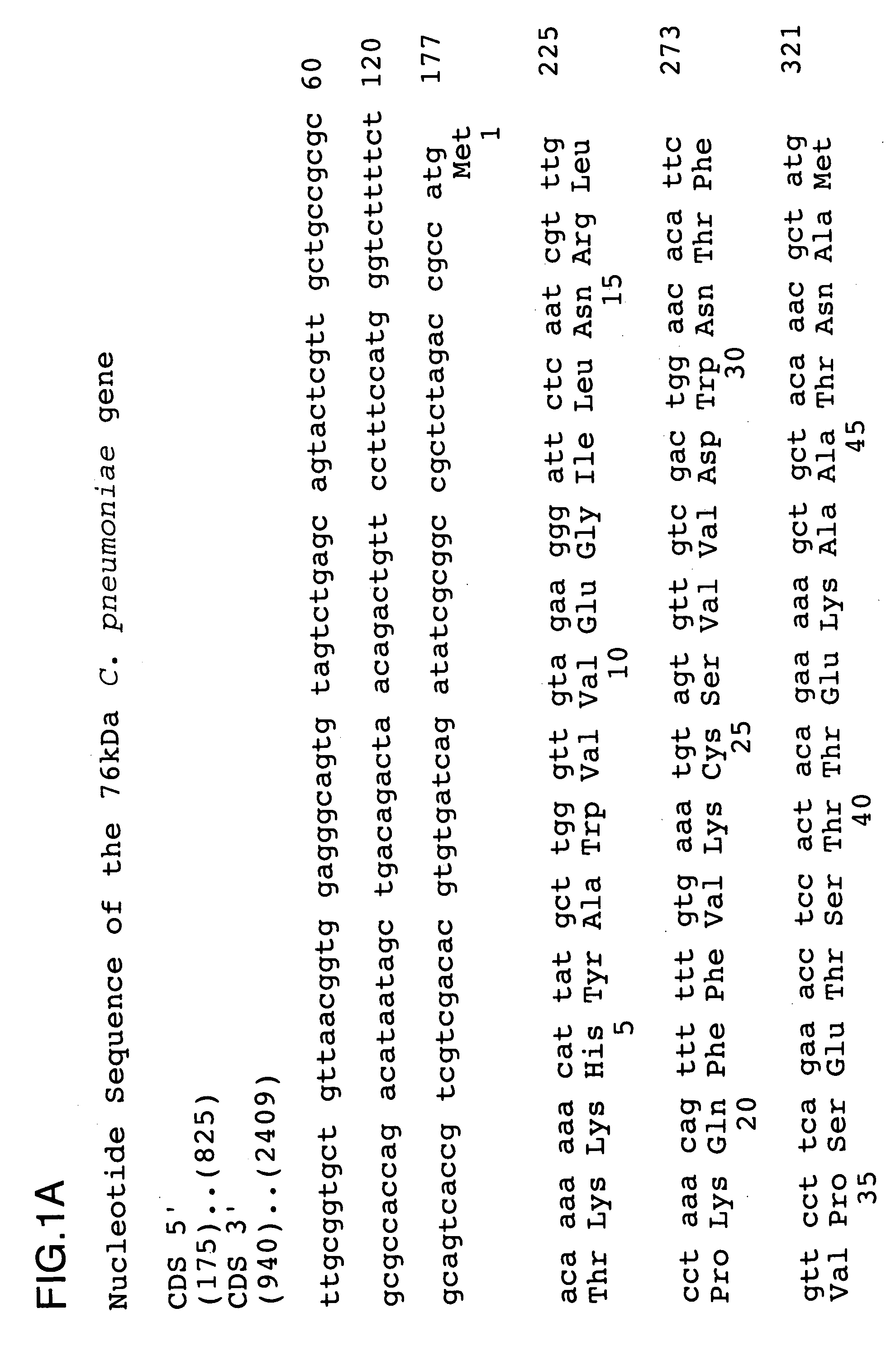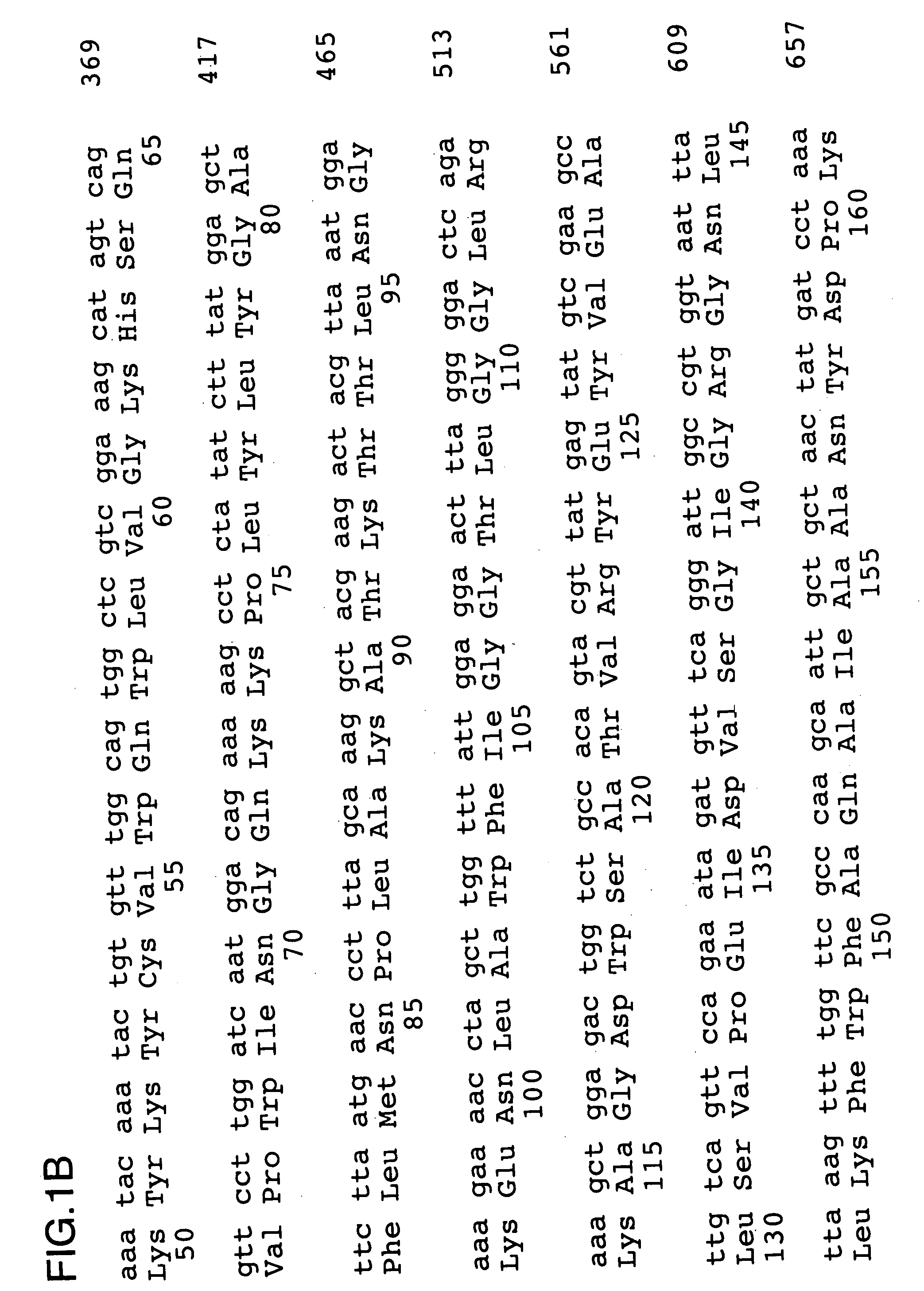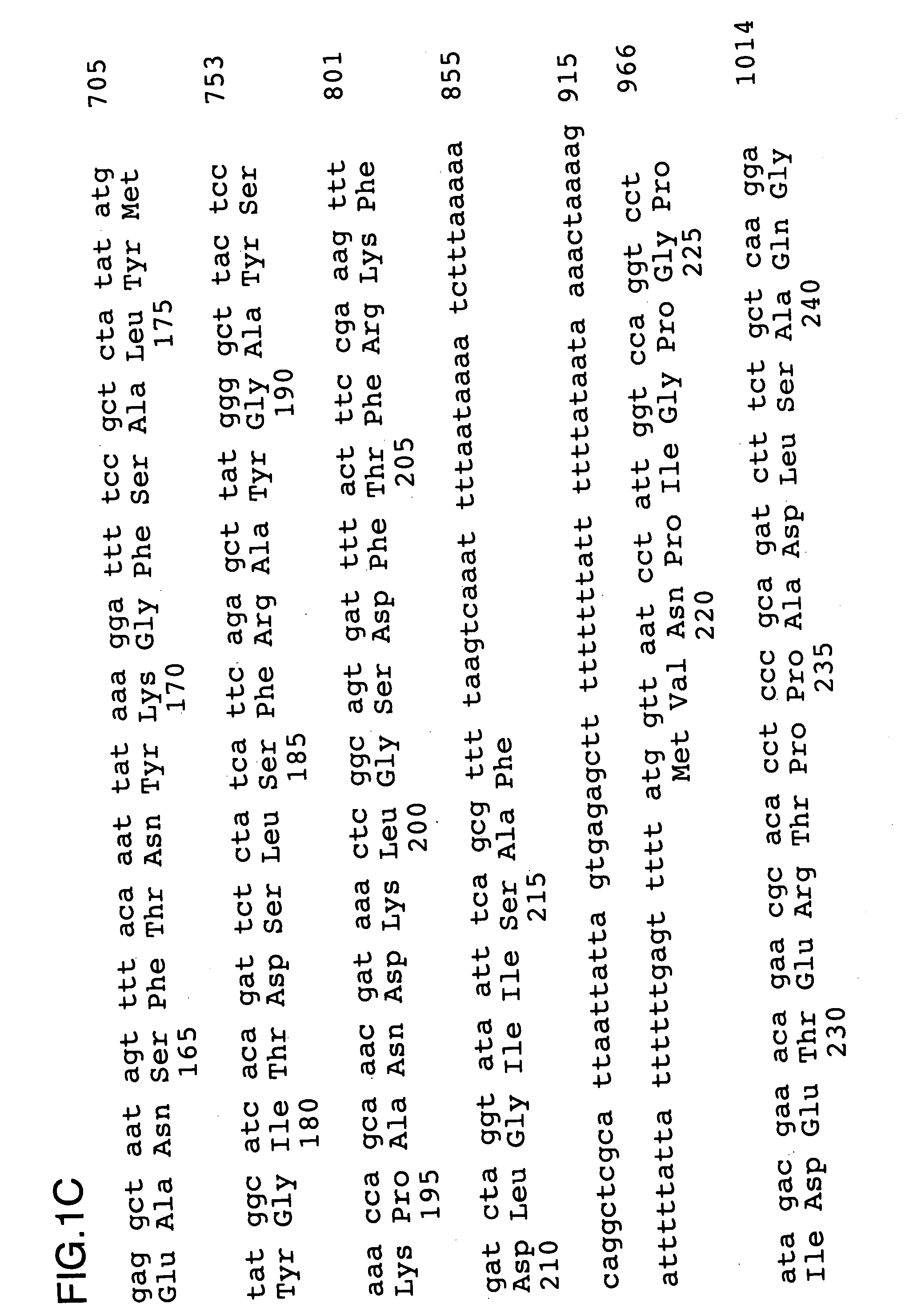Immunogenic compositions for protection against Chlamydial infection
a technology of compositions and compositions, applied in the field of immunogenic compositions for protection against chlamydia infection, can solve the problems of slow recovery, unfavorable patient infection status, and inability to effectively protect human beings, and achieve the effect of improving protection
- Summary
- Abstract
- Description
- Claims
- Application Information
AI Technical Summary
Benefits of technology
Problems solved by technology
Method used
Image
Examples
example 1
[0063] This Example illustrates the preparation of a plasmid vector pCA76 kDa containing the 76 kDa protein gene.
[0064] The 76 kDa protein gene was amplified from Chlamydia pneumoniae (CM1) genomic DNA by polymerase chain reaction (PCR) using a 5′ primer (5′ GCTCTAGACCGCCATGACAAAAAAACAT TATGCTTGGG 3′) (SEQ ID No: 9) and 3′ primer (5′ CGGGATCCATAGAACTTGCTGCAGCGGG 3′) (SEQ ID No: 10). The 5′ primer contains a Xba I restriction site, a ribsome binding site, an initiation codon and a sequence close to the 5′ end of the 76 kDa protein coding sequence. The 3′ primer includes the sequence encoding the C-terminal sequence of the 76 kDa protein and a Bam HI restriction site. The stop codon was excluded and an additional nucleotide was inserted to obtain an inframe C-terminal fusion with the Histidine tag. The presence of a stop codon at nucleotide 828 of the amplified sequence means that only a partial 76 kDa protein is expressed.
[0065] After amplification, the PCR fragment was using QIAqu...
example 2
[0066] This Example illustrates the preparation of a plasmid vector pCAMOMP containing the MOMP protein gene.
[0067] The MOMP protein gene was amplified from Chlamydia pneumoniae (CM1) genomic DNA by polymerase chain reaction (PCR) using a 5′ primer (5′ CCCGGATATCCCACCATGTTGCCTGTAGG GAACCCTTC 3′) (SEQ ID No: 11) and a 3′ primer (5′ GGGGTACCGGAATCTGAACTGACCAGATACG 3′) (SEQ ID No: 12). The 5′ primer contains a EcoRV restriction site, a ribosome binding site, an initiation codon and a sequence encoding the N-terminal sequence of the mature MOMP. The 3′ primer includes the sequence encoding the C-terminal sequence of the MOMP and a Kpn I restriction site. The DNA sequence encoding the leader peptide was excluded, the stop codon was excluded and an additional nucleotide was inserted to obtain an in-frame C-terminal fusion with the Histdine tag.
[0068] After amplification, the PCR fragment was purified using QIAquick™ PCR purification kit (Qiagen) and then digested with Eco RV and Kpn I a...
example 3
[0069] This Example illustrates the preparation of the eukaryotic expression vectors pCA76 kDa and pCAMOMP.
[0070] Plasmid pcDNA3.1 (−) (Invitrogen) was restricted with Spe I and Bam HI to remove the CMV promoter and the remaining vector fragment was isolated. The CMV promoter and intron A from plasmid VR-1012 (Vical) was isolated on a Spe I / Bam HI fragment. The fragments were ligated together to produce plasmid pCA / Myc-His, as seen in FIG. 2.
[0071] The Xba I / Bam HI restricted PCR fragment containing the 76 kDa protein gene (Example 1) was ligated into the Xba I and Bam HI restricted plasmid pCA / Myc-His to produce plasmid pCA76 kDa (FIG. 2).
[0072] The Eco RV / Kpn I restricted PCR fragment containing the MOMP gene (Example 2) was ligated into Eco RV / Kpn I restricted pCA / Myc-His to produce plasmid pCAMOMP (FIG. 4).
[0073] The resulting plasmids, pCA76 kDa and pCAMOMP, were transferred by electroporation into E. coli XL-1 blue (Stratagene) which was grown in LB broth containing 50 μg / ...
PUM
| Property | Measurement | Unit |
|---|---|---|
| immunogenic composition | aaaaa | aaaaa |
| molecular size | aaaaa | aaaaa |
| morphology | aaaaa | aaaaa |
Abstract
Description
Claims
Application Information
 Login to View More
Login to View More - R&D
- Intellectual Property
- Life Sciences
- Materials
- Tech Scout
- Unparalleled Data Quality
- Higher Quality Content
- 60% Fewer Hallucinations
Browse by: Latest US Patents, China's latest patents, Technical Efficacy Thesaurus, Application Domain, Technology Topic, Popular Technical Reports.
© 2025 PatSnap. All rights reserved.Legal|Privacy policy|Modern Slavery Act Transparency Statement|Sitemap|About US| Contact US: help@patsnap.com



